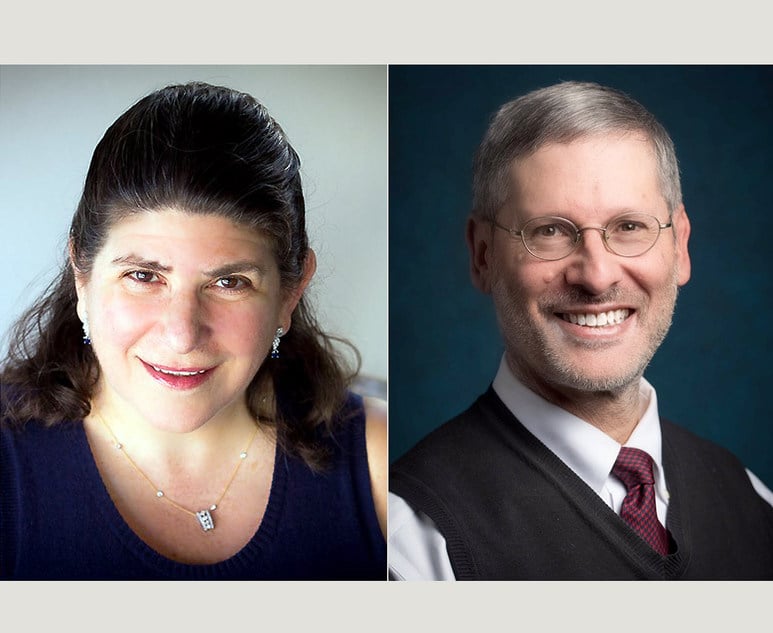Viewpoint: Mediation Could Help Us Avoid Another Shutdown
It is way past time to try a mediated approach with a credible trusted third party exploring new options, accommodating the true interests of the parties and the country.
January 30, 2019 at 04:59 PM
5 minute read
 Harry N. Mazadoorian
Harry N. Mazadoorian
The federal government's recent partial shutdown, which set a record for the longest in U.S. history, ended after 35 days. Regrettably, there was no permanent solution, as the agreed-on funding was only for three additional weeks. If no permanent agreement is reached by then, the standoff will once again resume, a continuing black eye for America with numerous disastrous consequences, some known and many still unknown.
The efforts to reach an accommodation between an unpredictable president and a highly determined speaker of the House, was a classic example of how not to reach an agreement: name-calling, public posturing and high-profile meetings without ground rules.
If they really want to break up this logjam, it's time for the president and congressional leaders to try a new approach, one in which a mediated solution is explored. There is virtually nothing to lose by this approach and everything to gain.
What's needed for the mediated approach?
First, the president and congressional leaders should call on a credible third party to serve as an intermediary and provide critical assistance in the discussions and negotiations. An intermediary is essential. Finding the right mediator is a difficult assignment, but it can be done. Candidates could be retired legislators, jurists or even presidents. To avoid any hint of partisanship, a co-mediation can be attempted by a Republican and a Democrat. Nor does the mediator have to be a former government leader. Just one possibility is Kenneth Feinberg, who has successfully mediated major matters ranging from the World Trade Center claims to oil spills and college shootings.
Using a mediator would not in any way be a sign of weakness for the disputants. On the contrary, it would demonstrate an unwavering commitment to reaching a solution.
Second, the parties must identify and work toward their real interests instead of their publicly stated positions. We all know that so far the president and the speaker are inflexible on the question of funding or not funding a physical wall, at a stated price of nearly $6 billion. But the professed interests of the disputants are (or at least they state they are) achieving better border security and adopting a rational and workable immigration policy—common goals.
Third, all the critical decision makers must participate in the conversation. So far, it has been President Trump and Speaker of the House Pelosi, with the vice president, Senate Minority Leader Chuck Schumer and a few others looking on. If a legislative solution is to be reached, all critical legislative stakeholders must participate in the discussion with the president.
The mediator can assist in many ways.
• Initially, and most importantly, in helping the parties to acknowledge their true interests outlined above.
• Developing options. During the course of the debate, as inflammatory as it has been, a number of midway positions have been advanced. Some of these include achieving interests supported by both parties using technology rather than physical barriers and employing a much more scaled-down and less costly physical barrier.
• With respect to option building, the mediator can take the pressure off the parties by suggesting a number of other possible solutions rather than have them come from the parties themselves. Professional mediators often refer to “reactive devaluation.” Greatly oversimplified this means that if an idea is advanced by one side, the other will have a tendency to want to reject it: “If you propose it, then I automatically don't like it.” A proposal coming from the mediator, after input from both sides, is much less likely to be rejected in knee-jerk fashion.
• Toning down the rhetoric. It's hard to agree with someone who keeps insulting you. While a mediator may not be able to keep tweets from flying during a mediation, a modicum of civility can certainly be introduced to the conversation. Sitting between Trump and Pelosi could be hazardous, but a skilled and experienced mediator can keep discussions productive, even in the midst of strong egos, volatile personalities and erratic behavior.
• Reality testing. The mediator, in both joint and private meetings with the parties, can explore the efficacy of what the parties propose to do: “Will that really achieve what you are seeking?” The mediator can channel parties away from courses of action which are likely to continue the dispute and introduce even more uncertainty, and probably litigation, such as seeking out a unilateral solution through an executive order or declaring an emergency.
• Another benefit to using a mediator would be to resolve the matter without either party appearing to be a loser or having caved in. The mediator can guide the parties toward a resolution without either side losing face. While it may seem unlikely at this point, if a mediation is done well, both sides can emerge looking like statesmen.
In resolving a high-stakes situation such as the government shutdown and fixation on a single wall or no wall issue, parties can lose sight of the fact that the process used in seeking a resolution is extremely important and can often determine whether impasse can be broken. Clearly, the current process of meeting before television cameras, lobbing insults and rejecting the same proposal over and over again has not been productive, but instead dysfunctional.
It is way past time to try a mediated approach with a credible trusted third party exploring new options, accommodating the true interests of the parties and the country.
Harry N. Mazadoorian is a commercial arbitrator, mediator and member of the American Arbitration Association's Master Mediator Panel. He is the distinguished senior fellow in the Center for Dispute Resolution at Quinnipiac University School of Law.
This content has been archived. It is available through our partners, LexisNexis® and Bloomberg Law.
To view this content, please continue to their sites.
Not a Lexis Subscriber?
Subscribe Now
Not a Bloomberg Law Subscriber?
Subscribe Now
NOT FOR REPRINT
© 2025 ALM Global, LLC, All Rights Reserved. Request academic re-use from www.copyright.com. All other uses, submit a request to [email protected]. For more information visit Asset & Logo Licensing.
You Might Like
View All
ADVANCE Act Offers Conn. Opportunity to Enhance Carbon-Free Energy and Improve Reliability With Advanced Nuclear Technologies

Trending Stories
- 1How ‘Bilateral Tapping’ Can Help with Stress and Anxiety
- 2How Law Firms Can Make Business Services a Performance Champion
- 3'Digital Mindset': Hogan Lovells' New Global Managing Partner for Digitalization
- 4Silk Road Founder Ross Ulbricht Has New York Sentence Pardoned by Trump
- 5Settlement Allows Spouses of U.S. Citizens to Reopen Removal Proceedings
Who Got The Work
J. Brugh Lower of Gibbons has entered an appearance for industrial equipment supplier Devco Corporation in a pending trademark infringement lawsuit. The suit, accusing the defendant of selling knock-off Graco products, was filed Dec. 18 in New Jersey District Court by Rivkin Radler on behalf of Graco Inc. and Graco Minnesota. The case, assigned to U.S. District Judge Zahid N. Quraishi, is 3:24-cv-11294, Graco Inc. et al v. Devco Corporation.
Who Got The Work
Rebecca Maller-Stein and Kent A. Yalowitz of Arnold & Porter Kaye Scholer have entered their appearances for Hanaco Venture Capital and its executives, Lior Prosor and David Frankel, in a pending securities lawsuit. The action, filed on Dec. 24 in New York Southern District Court by Zell, Aron & Co. on behalf of Goldeneye Advisors, accuses the defendants of negligently and fraudulently managing the plaintiff's $1 million investment. The case, assigned to U.S. District Judge Vernon S. Broderick, is 1:24-cv-09918, Goldeneye Advisors, LLC v. Hanaco Venture Capital, Ltd. et al.
Who Got The Work
Attorneys from A&O Shearman has stepped in as defense counsel for Toronto-Dominion Bank and other defendants in a pending securities class action. The suit, filed Dec. 11 in New York Southern District Court by Bleichmar Fonti & Auld, accuses the defendants of concealing the bank's 'pervasive' deficiencies in regards to its compliance with the Bank Secrecy Act and the quality of its anti-money laundering controls. The case, assigned to U.S. District Judge Arun Subramanian, is 1:24-cv-09445, Gonzalez v. The Toronto-Dominion Bank et al.
Who Got The Work
Crown Castle International, a Pennsylvania company providing shared communications infrastructure, has turned to Luke D. Wolf of Gordon Rees Scully Mansukhani to fend off a pending breach-of-contract lawsuit. The court action, filed Nov. 25 in Michigan Eastern District Court by Hooper Hathaway PC on behalf of The Town Residences LLC, accuses Crown Castle of failing to transfer approximately $30,000 in utility payments from T-Mobile in breach of a roof-top lease and assignment agreement. The case, assigned to U.S. District Judge Susan K. Declercq, is 2:24-cv-13131, The Town Residences LLC v. T-Mobile US, Inc. et al.
Who Got The Work
Wilfred P. Coronato and Daniel M. Schwartz of McCarter & English have stepped in as defense counsel to Electrolux Home Products Inc. in a pending product liability lawsuit. The court action, filed Nov. 26 in New York Eastern District Court by Poulos Lopiccolo PC and Nagel Rice LLP on behalf of David Stern, alleges that the defendant's refrigerators’ drawers and shelving repeatedly break and fall apart within months after purchase. The case, assigned to U.S. District Judge Joan M. Azrack, is 2:24-cv-08204, Stern v. Electrolux Home Products, Inc.
Featured Firms
Law Offices of Gary Martin Hays & Associates, P.C.
(470) 294-1674
Law Offices of Mark E. Salomone
(857) 444-6468
Smith & Hassler
(713) 739-1250












